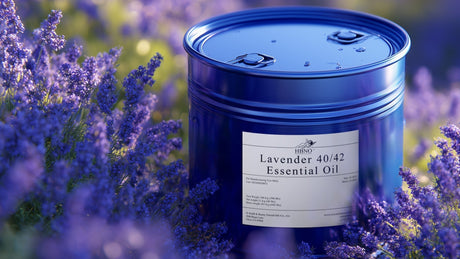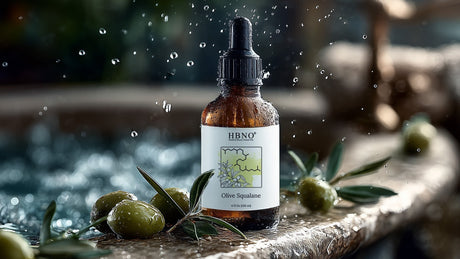For those passionate about baking, essential oils can be a game-changer, offering vibrant, pure plant flavors without synthetic additives. However, knowing how to use bakery essential oils is key to creating delicious and safe results..
In this guide, we'll take you through the basics of baking with essential oils, how to choose the right ones, and how to use them safely and effectively to elevate your baked goods.
Are Essential Oils Safe to Use in Baking?
Yes, edible essential oils can be safe for baking-but only if you choose the right kind. Not all essential oils are created for consumption. Some are intended purely for external use or aromatherapy and may contain additives or concentrations not safe to ingest. Always ensure the oils you're using are food-grade and approved for internal use.
Look for oils labeled as "GRAS" (Generally Recognized as Safe) by the FDA. These are suitable for use in food flavorings and beverages.
Choosing the Right Essential Oils for Baking
When deciding how to use essential oils in baking, it's important to start with the right oil. Here are some popular and safe choices for your kitchen:
-
Lemon Essential Oil - Adds a bright citrus zing to cakes, glazes, and cookies.
-
Orange Essential Oil - A sweet, fragrant oil great for muffins, pastries, and chocolate recipes.
-
Peppermint Essential Oil - Intensely minty and perfect for holiday cookies or brownies.
-
Lavender Essential Oil - Delicate and floral, great for shortbreads, cakes, and even frostings.
-
Cinnamon Bark Essential Oil - Warm and spicy; use it in gingerbread, cinnamon rolls, and spice cakes.
-
Clove bud Essential Oil - Pairs beautifully with autumn-inspired or spiced baked goods.
Be cautious with more pungent oils like oregano, thyme, or rosemary-they can be overpowering and may not suit sweet recipes.
General Guidelines for Baking with Essential Oils
Using essential oils in baking is an art as well as a science. Here are some important tips to help you get the best results:
1. Less Is More
Essential oils are incredibly potent. One drop may be enough for an entire batch of cookies or cake. A common method is the toothpick swirl: dip a clean toothpick into the oil and swirl it into your batter. You can always add more, but you can't take it out once it's in!
2. Dilute in a Carrier
To ensure even distribution, mix your essential oil into a fat-based ingredient in your recipe such as butter, coconut carrier oil, or vegetable oil. If you're avoiding coconut oil, some of the best substitutes for coconut oil include avocado oil, grapeseed oil, olive oil, or sunflower oil. This not only blends the oil evenly but also helps carry the flavor through the baked good.
3. Add Oils Toward the End
If possible, add essential oils toward the end of the mixing process or to glazes and icings after baking. High heat can degrade the volatile compounds in essential oils, reducing both their flavor and therapeutic properties.
4. Pair Flavors Thoughtfully
When learning how to use essential oils in baking, think of them as you would spices. Pair citrus oils with vanilla or berries, use peppermint with chocolate, or combine lavender with honey or lemon. Start simple and expand your palette as you get more comfortable.

How to Incorporate Essential Oils in Your Recipes
Here are some fun and practical ways to use essential oils in baking:
1. Flavor Buttercreams and Glazes
Essential oils like lemon, orange, or peppermint make a perfect addition to buttercream frosting, sugar glazes, and whipped toppings. Add a drop to your frosting base, taste-test, and adjust as needed.
2. Infuse Sugar with Essential Oils
You can create flavored sugar by placing a few drops of essential oil in a sealed container with granulated sugar. Shake it well and let it sit for a few days. Use this sugar to add subtle flavor to scones, sprinkle over cookies before baking, or stir into tea.
3. Boost the Flavor of Doughs and Batters
Add diluted essential oils directly into your batters or doughs. For instance, one drop of orange essential oil in your chocolate chip cookie dough can take the flavor to the next level. Just remember to keep the dose low and mix well.
4. Enhance Homemade Extracts or Oils
You can make your own flavored oils or extracts by combining a food-safe carrier oil (like grapeseed carrier oil or fractionated coconut oil) with essential oils. Store in a dark glass bottle and use in place of extracts or for brushing on warm baked goods after baking.
Popular Recipes to Try with Essential Oils
Looking for some inspiration? Here are a few ideas to get you started:
-
Lavender Shortbread Cookies: Use one drop of lavender essential oil in place of dried lavender.
-
Lemon Pound Cake: Add 1-2 drops of lemon essential oil to the batter and glaze.
-
Peppermint Brownies: Stir a drop of peppermint oil into your brownie batter or chocolate ganache.
-
Spiced Apple Muffins: Add a combination of cinnamon and clove essential oils for warm autumn flavors.
-
Orange-Chocolate Chip Scones: A drop of orange oil can brighten up this classic breakfast treat.
Final Thoughts
Essential oils offer a fun, flavorful, and natural way to transform your baking. By understanding how to use essential oils in baking, you open the door to creative possibilities in the kitchen-whether you're a home baker, a professional pastry chef, or running your own baking business.
At HBNO Bulk, we're proud to supply high-quality, Food-Grade Essential Oils that meet the highest safety and purity standards. Whether you're crafting Lemon Cupcakes, Minty Chocolate Desserts, or Fragrant Scones, we have the Essential Oils you need to flavor your treats with nature's best.
Collaborate with a Reliable Private Label Partner offering consistent, dependable manufacturing services.



